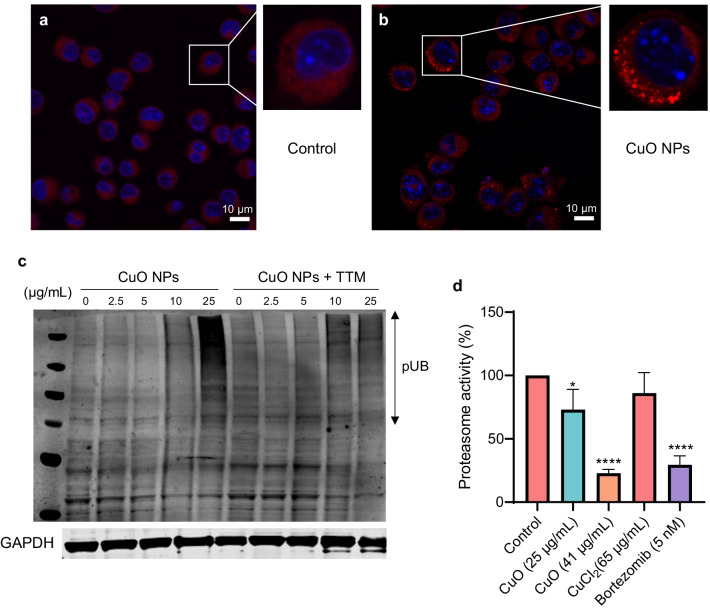Fig. 6.
CuO NPs trigger protein aggregation and proteasomal insufficiency. RAW264.7 cells were untreated (a) or exposed to CuO NPs (b) at 25 µg/mL (BMD20) for 6 h and protein aggregation (i.e., aggresome formation due to the aggregation of misfolded proteins) was determined using the PROTEOSTAT® reagent (red). Cell nuclei were counterstained with DAPI (blue). c The accumulation of polyubiquitinated proteins after 12 h of exposure of cells to CuO NPs at the indicated concentrations in the presence or absence of TTM (50 µM) was determined using an anti-ubiquitin antibody. GAPDH was used as a loading control. d The chymotrypsin-like activity of the 20S proteasome was determined after exposure for 24 h to CuO NPs or CuCl2 as indicated. Bortezomib was used as a positive control. Data are shown as mean values ± S.D. (n = 3). *p < 0.05; ****p < 0.0001 (significant difference between control and treatments)

